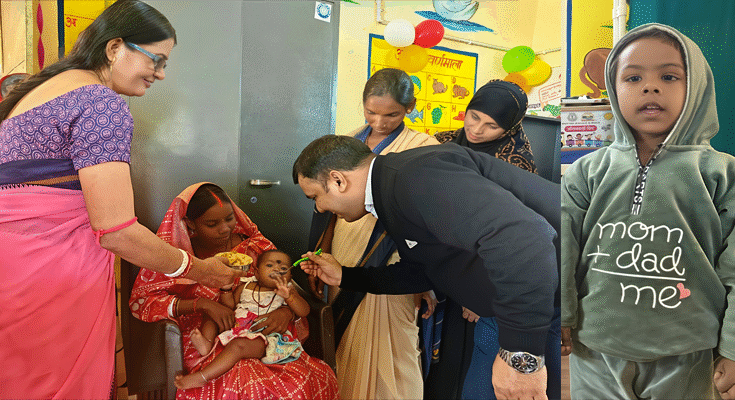To mark Children’s Day, ESL organized joyful activities across all Nand Ghars, where children participated in drawing sessions, coloring, storytelling and poem recitations. Senior leadership including Head-PR & Stakeholder Management Sanjay Sinha and Head-CSR Kunal Daripa personally engaged with children, reaffirming ESL’s commitment to creating nurturing, playful learning environments in underserved rural pockets.
The recent celebrations built upon the success of Poshan Maah, during which mothers attended awareness workshops on breastfeeding, balanced diets, hygiene, and locally prepared nutritional meals. A cornerstone of these efforts is the regular distribution of Sishu Sanjivini—a millet-based halwa aimed at boosting immunity, improving growth, and enhancing energy levels in children below six years of age. The initiative complements India’s growing millet mission and advances the fight against malnutrition in Jharkhand.
At Nand Ghar Usardih, Sevika Maya Khawas expressed the emotional impact of the program, saying: “Sahi poshan hi inke sapnon ki sabse mazboot neev hai. Jab main kisi bachche ko kamzor se tandurust hote dekhti hoon, toh lagta hai meri mehnat safal ho rahi hai. Yeh bacche sirf Nand Ghar ke nahi, mere apne hain. Inki har khushi, har pragati mere liye sabse badi uplabdhi hai.”
In addition to modern health education, many Nand Ghars blended cultural traditions with developmental messaging. Community ceremonies like God Bharai (baby shower) and Annaprashan (first rice feeding) were conducted alongside sessions on maternal wellness and the importance of appropriate complementary nutrition.
“At ESL, we believe every child deserves strong health and strong learning from day one,” said Ravish Sharma, Dy. CEO & WTD, ESL Steel Ltd. “Through Sishu Sanjivini, systematic nutrition support and cheerful learning experiences at Nand Ghars, we are enabling healthier and happier childhoods in rural Jharkhand.”
Sustained efforts by ESL are already yielding visible improvements in local communities, including: Higher child nutrition levels; Greater parental participation and Better school-readiness among early learners.




